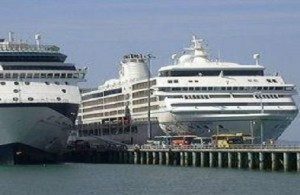Story of the Conquest of America
Miscellanea / / February 01, 2022
Story of the Conquest of America
The four chapters of the conquest of America
At the end of the 15th century, the worldview of the empires of Europe changed forever. A Genoese navigator, bent on finding new trade routes to the East for Spain, stumbled upon the unexpected shores of a continent whole, which they called differently: “the New World”, “The West Indies”.
soon had News of the fabulous natural treasures that abounded in that new land, or of the aboriginal peoples who among them they lived, and faced with the cruelty and greed of the Europeans, the Catholic Church had to to intervene. Then, Pope Alexander VI announced that the new continent should be under the control of the crown and that it should be used for the expansion of Christianity, that is, that the natives should be converted to the religion “true” and that they should be shown Christian compassion.
That is why Spain was the first to gain control of the continent, and had to confront the native peoples through war, while other empires, like the English or the Dutch, were encouraged to colonize parts of the new continent later, when the Protestant Reformation allowed them to get rid of the mandates of the papacy. The history of the conquest of America by the European powers is divided into four different parts: the Spanish conquest, the Portuguese conquest, the French conquest, and the British conquest.
First chapter: the Spanish conquest
The conquest of America began entirely with the arrival of Columbus on the Caribbean coast in 1492 and the announcement to the crowns of Spain and Portugal for his fabulous discoveries over three consecutive voyages. Both nations dedicated themselves to exploring that new world and their respective borders must have been delimited by the pope and agreed upon in the Treaty of Tordesillas of 1494, in order to avoid clashes.
The first Spanish colony founded in the new world was born on the island of Hispaniola (currently the territory of Haiti and the Dominican Republic) on December 5, 1492, by the hand of these first expeditionaries. From there, in the years to come, the Spanish presence expanded to other Caribbean islands, such as Cuba, and eventually to the coasts of present-day Venezuela, where in 1500 the first European city on the continent was founded, called Nueva Cádiz, on the island of Cubagua.
Trade and exchange with the friendlier indigenous peoples of the region (such as the Taínos), as well as the confrontation with the most bellicose (such as the Caribs), were inevitable in the face of the colonial expansion of the newly arrived. In the same way they learned of great and prosperous kingdoms that existed in the distance, so new exploration missions soon headed north and south of the new continent.
The arrival of Cortes from Mexico
It was thus that in 1518, an expedition under the command of Hernán Cortés arrived at the Mexican island of Cozumel and from there to the coasts of the Yucatan Peninsula, to then begin its ascent to the north, to the lands of the Mexica Empire. On the way he was intercepted by diplomatic delegations from the Aztec emperor, Moctezuma Xocoyotzin, who handed him gifts and jewelry, but also asked him to stop their advance as they would not be well received in the capital of his empire. But each gift spurred more and more the ambition of the conquerors.
The Mexicas, moreover, had earned the hatred and rivalry of all the neighboring peoples, subjected to domination and tribute by the empire, so that the The presence of the Spaniards, whom many admired as mythical beings drawn from legends and prophecies, was received as an opportunity to rise. Under false promises of LibertyCortés convinced the Tlaxcaltecas and the Totonacos to sign an alliance against the Aztecs and join a large army that would march on Tenochtitlán.
On November 8, 1519, Cortés and his army arrived in the Aztec capital. Moctezuma, still undecided about the divine character of the invaders, received them with honors and was promptly kidnapped by them. The looting and the imposition of the Catholic religion were immediate, as were the first massacres, which unleashed the uprising of the Mexica people themselves, who rejected the authority of Moctezuma and threw the Spanish out of the town.
This is the beginning of the war of conquest of Mexico, a long and cruel saga that ended on August 13, 1521, with the fall of Tenochtitlán and the end of the Mexica Empire. In its place, the Viceroyalty of New Spain was about to be born, and the conquistadors soon took war on the rest of the unruly Aboriginal peoples, many of them his own former allies.
The conquest of the Tawantinsuyu Inca
The military and logistical success in Mexico opened the way for new expeditions in other regions of the continent. The Inca empire, for example, fresh from a destructive civil war between the Huáscar brothers and Atahualpa, was visited by Francisco Pizarro in 1532.
The conqueror, replicating the tricks of Cortés in the north, met with the emperor Atahualpa, arrested him, executed him, and allied himself with the side of his brother and also with other aboriginal ethnic groups subjugated by the Inca empire, who understood that alliance as an opportunity to get free.
Spanish troops and their indigenous allies took the capital of Tawantinsuyu on November 14, 1533, and placed a puppet king on the throne: Manco Cápac II. But the latter rebelled and started a war in 1536, which sought to restore the Inca government. The Spanish won the conflict and the Incas had to move to Vilcabamba, where they resisted until 1572, when the last Inca sovereign was executed: Tupac Amaru I.
Hispanic America is born
Although these two were the most famous cases of military and political conquest of the pre-Columbian peoples by the Spanish, there were other many similar wars of conquest across the continent, with more or less similar results: the defeat (and often extermination) of aboriginal soldiers and the submission of the rest to a process of colonization and transculturation that would change the destiny of the region for forever.
At its moment of greatest presence in America, around the year 1790, the Spanish Empire controlled almost half of the continent's lands, from the Southern Cone, the entire Pacific coast and the plains from northern South America, through Central America and most of the Caribbean islands, the Mesoamerican region and various areas of the south and west coast of what is now the United States.
Second chapter: the Portuguese conquest
The conquest of American territories by the Portuguese crown began in 1500, respecting the agreements established with its neighbor, the Spanish Empire, and was limited to the vast South American region that we know today like Brazil. More than 10 general captaincies were established there, although to do so the Portuguese crown had to confront the French on several occasions and the Dutch, who tried to seize American territories and even temporarily conquered the cities of Rio de Janeiro and Recife.
The first European to claim the lands of Brazil for the Portuguese crown was Pedro Álvarez Cabral. For several decades, the relationship between the Portuguese crown and the Tupiguaraní or Arawak peoples of the region was one of trade and exchange of raw Materials, in favor, obviously, of the Europeans. But realizing the presence of the Dutch, French and British doing the same, the decision was made in 1530 to control the coasts of Brazil and found Portuguese colonies.
Thus, Brazil was divided into productive regions, in which Brazilwood abounded, but sugar cane was also introduced. sugar, coming from the island of Madeira, and which over time would end up being the main source of income for Brazil colonial.
The Portuguese, moreover, holders by papal decree of the exclusive rights for the African slave trade, massively introduced the "infidels" from Guinea, Nigeria and other stocks Africans in America, for use on plantations, forever altering the ethnic makeup of Brazil.
However, most of the captaincies general failed, except for those of Pernambuco and Sao Vicente. This did not prevent a massive exodus of Portuguese citizens to the new world from causing the foundation in 1548 of the State of Brazil, and its first colonial seat, Salvador.
Third chapter: the French conquest
Compared to the Spanish, Portuguese and British, the conquest and colonization of American soil by the French was considerably less. And, unlike its European neighbors, France took an active interest in controlling American territory in the 16th century, thanks to the explorations of Samuel de Champlain, and continued to try without much success until the 16th century. XVIII.
The first French approaches to America took place in the 16th century, mainly in North America, during the reign of Francis I. Initially, a passage to the Pacific Ocean was sought in the region near Florida and Newfoundland: both Giovanni da Verranzano and Jacques Cartier were among the first explorers to discover these places. On the third voyage of the latter explorer, a fortification called Charlesbourg-Royal, which was later abandoned in the middle of the century due to inclement weather and the hostility of the native people.
Later, around 1562, there were new expeditions of French Huguenots to the new world, with the purpose of establish a "French Florida," but were violently repelled by the Spanish, who considered the entire region. However, Samuel de Champlain had better luck in the 16th century. Thus it was possible to found a series of French colonies in North America that, during the 16th, 17th and 18th centuries, formed the Viceroyalty of New France (Nouvelle France), whose territory covered during its heyday (in the middle of the 18th century) the entire central-eastern zone of the current United States and the Atlantic part of Canada.
Although the French colonization had to face the resistance of the indigenous Iroquois and other native peoples who resisted his presence, his main enemies were the other imperial powers, especially Spain and Great Britain. Brittany. The latter, in fact, seized their American colonies from the French in the Treaty of Paris of February 10, 1763, at the end of the Franco-Indian War, ending New France forever.
Chapter Four: The British Conquest
The British Empire became interested in the New Continent at the beginning of the 17th century, as it feared being left behind in the distribution of the land against Spain and Portugal. His efforts focused on North America, where he had his first American estate in 1607: Fort Jamestown, in what is now the US state of Virginia. That was the first successful attempt to colonize an American region, especially after the mysterious loss of the Roanoke Colony in North Carolina. Other important British settlements in America took place in Jamaica and Barbados, islands located in the Caribbean.
Between the 17th and 18th centuries, Great Britain founded 13 colonies in North American territory: Massachusetts Bay, New Hampshire, Rhode Island, Connecticut, New York, Pennsylvania, New Jersey, Delaware, Maryland, Virginia, Georgia, and North Carolina and South Carolina south. Tobacco, rice, cotton and naval materials were produced in them, with an important slave workforce supplied from London. And for its establishment, a merciless war was waged against the aboriginal tribes of the region, sustained well into the 19th century. Thus the populations of the Sioux, Mohicans, Apaches, Chickasaws, Seminoles, and Cherokees were decimated, and eventually forced to play a secondary role in the new colonial state.
The thirteen British colonies in America were the first in the entire continent to become independent from the metropolis through the American Revolution that began in 1763 and lasted for 20 consecutive years. An example that inspired the Spanish colonies to do the same during the 19th century.
References:
- "Narration" in Wikipedia.
- "Conquest of America" in Wikipedia.
- “The conquest of America” (video) in InFocus.
- “The Exploration and Conquest of the New World”in lumen learning.
- “Colonization of the Americas”in Britannica Kids.
What is a story?
A story It is a set of real or fictional events organized and expressed through the language, that is, a story, a chronicle, a novel, etc. Stories are an important part of culture, and telling and/or listening to them (or, once the writing, reading them) constitutes an ancestral activity, considered among the first and most essential of the civilization.
Follow with:



